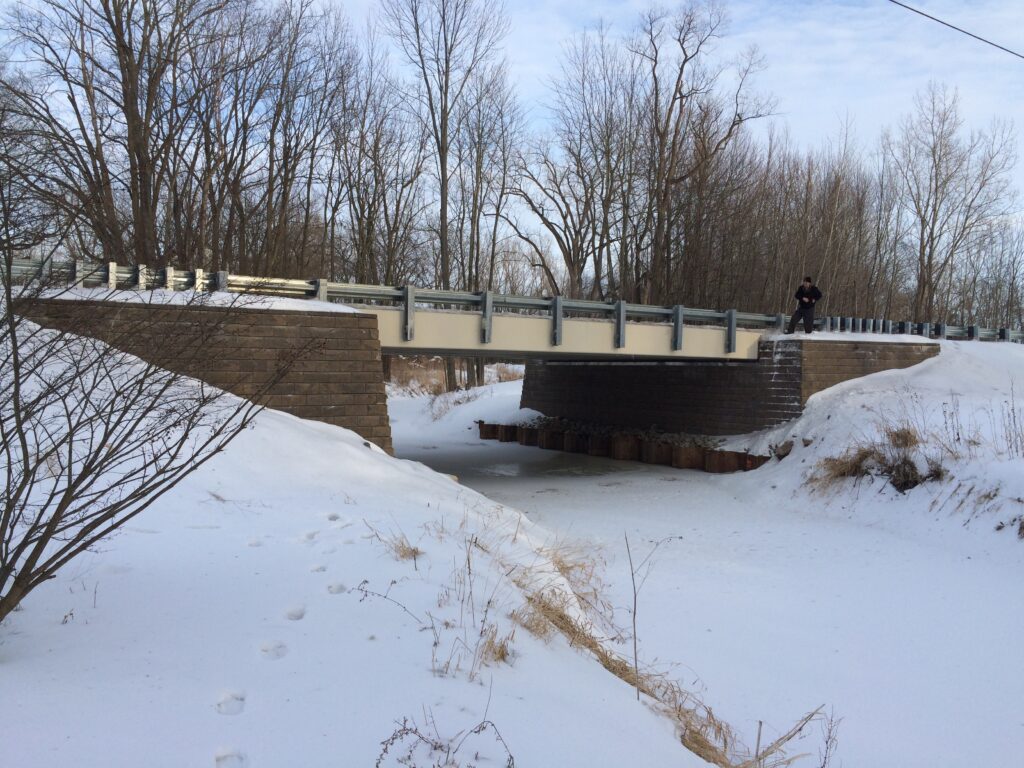
The Federal Highway Administration promoted geosynthetic reinforced soil integrated bridge system (GRS IBS) between 2011 and 2017 as part of the Everyday Counts (EDC) program. The GRS IBS is a design and construction method to build single-span bridges quickly and cost effectively.
Typically, bridges are constructed utilizing deep foundations such as piles to support the superstructure and the approach is constructed on an embankment fill which is subject to the effect of settlement and consolidation. This difference in support between the superstructure and the approach can cause a “bump at the end of the bridge” when the embankment settles and the bridge does not.
GRS IBS utilizes closely spaced geosynthetic reinforcement and a granular backfill to construct the abutments and approaches which directly support the superstructure. This reduces the difference in settlement between the structure and the approach significantly reducing or eliminating the bump. The result is better rideability, safety and performance while reducing maintenance of the overall structure.
The use of GRS IBS was limited to a few low volume roads constructed by counties in Ohio and New York prior to EDC in 2011. Currently there are several hundred bridges in service nationally. In addition to the numbers, the use has expanded from counties to state and federal transportation agencies across the country.
Initially the deployment plan was to expand the use of GRS IBS nationally primarily focused on single spans structures with a maximum span of 140 feet which were on low volume roads. Most of the national bridge inventory falls under this description which provided a lot of opportunity. As experience grew in combination with the observed performance engineers became more comfortable with the technology and have expanded the use beyond its original deployment plan. The longest single span length grew from 140 feet to 190 feet.
GRS IBS have also been constructed on high volume roads and continuous two span structures. In addition, many of the structures have experienced extreme loading such as flooding, hurricanes, and earthquakes and continue to perform as design.
The FHWA continues to observe bridges that have been instrumented and monitored in the field as well as several that have been constructed at the Turner Fairbank Highway Research Center for long term performance. The growth in the use of GRS IBS demonstrates the success of the FHWAs EDC program to increase the use of underutilized market ready technologies.
As with all tools, GRS IBS is only one tool in the box which works well in many cases, but it isn’t suitable in all cases. The project engineers need to evaluate the suitability for the use of GRS IBS for the specific site conditions and design criteria.
Additional information on the technology:
- Design and Construction Guidelines for Geosynthetic Reinforced Soil Abutments and Integrated Bridge Systems.
- GRS-IBS webpage
- FHWA video
- Instrumentation and 5-Year Performance Monitoring of a GRS-IBS in St. Lawrence County, NY
- Synthesis—The Reduction and Analysis of Pavement Profiler Data to Quantify the Bump at the End of the Bridge
Daniel Alzamora, P.E., is a contributing editor for Geosynthetics and has spent more than three decades in the geosynthetics industry in both the public and private sector.
 TEXTILES.ORG
TEXTILES.ORG


